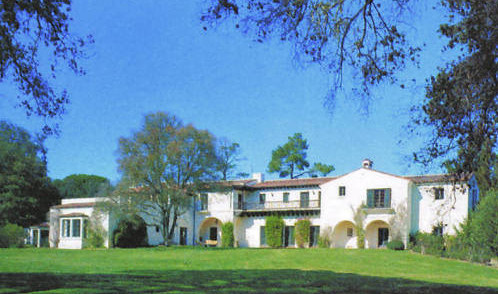 |
| Fallingwater |
Dana House
Other interesting links:
Insights and opinions on Architecture and design related topics by Architect Ellis A. Schoichet AIA. Ellis' Architectural practice is located in San Mateo California, between San Francisco and the Santa Cruz mountains. Through his design firm EASA Architecture, Ellis is committed to creating designs that go beyond purely functional solutions. EASA Architecture seeks to fulfill clients' emotional needs and aesthetic goals in the design of both residential and non-residential projects.
 |
| Fallingwater |
 |
| Moorcrag |
 |
| Ahwahnee Hotel, Yosemite National Park California |
 Being a native Californian I've always been a huge fan of the Spanish and Spanish Colonial Revival styles. George Washington Smith was a key figure during the period these styles blossomed and flourished in 1920's California. Most of his projects are found in the Santa Barbara area, but he completed projects elsewhere in California and the USA. Originally a painter, he had spent significant time touring Europe prior to World War I- painting and studying Art. He returned to the US to wait out the war, eventually arriving in the Santa Barbara area. His focus turned to Architecture after a home and studio he designed for himself was recieved with acclaim by the Architectural press. For a brief period between 1919 and his death in 1930 he produced strikingly beautiful homes and other structures. His work evoked the timeless beauty and feeling of its European antecedents, but was purposefully adapted to creating a lifestyle and image unique to the culture and climate of California.
Being a native Californian I've always been a huge fan of the Spanish and Spanish Colonial Revival styles. George Washington Smith was a key figure during the period these styles blossomed and flourished in 1920's California. Most of his projects are found in the Santa Barbara area, but he completed projects elsewhere in California and the USA. Originally a painter, he had spent significant time touring Europe prior to World War I- painting and studying Art. He returned to the US to wait out the war, eventually arriving in the Santa Barbara area. His focus turned to Architecture after a home and studio he designed for himself was recieved with acclaim by the Architectural press. For a brief period between 1919 and his death in 1930 he produced strikingly beautiful homes and other structures. His work evoked the timeless beauty and feeling of its European antecedents, but was purposefully adapted to creating a lifestyle and image unique to the culture and climate of California.